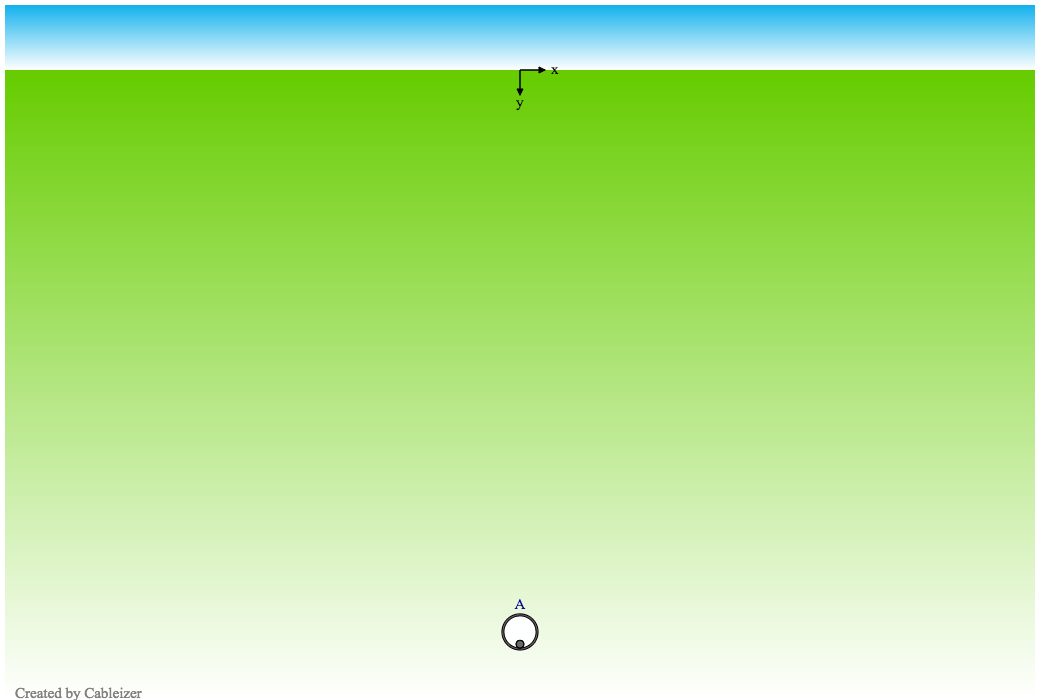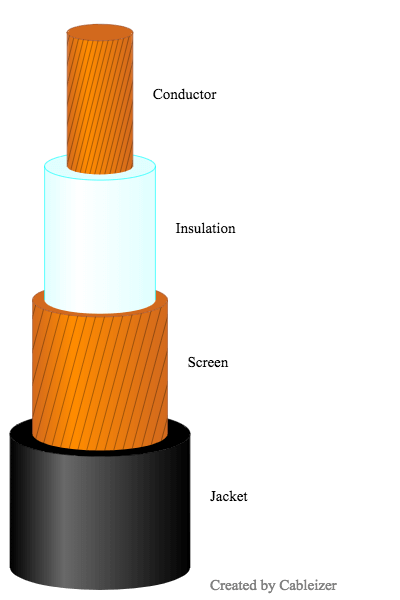A concentric cable has a conductor around the core for a return path. DC cables may be of concentric type as is the case in an integrated return conductor cable, where the return conductor is installed around the core conductor. Such cables are not directly covered by IEC 60287 but Cableizer implemented a method from CIGRE.
Posted 2018-01-21
Categories:
New feature
, Theory
The Oxford English dictionary defines a concentric cable as: "A cable consisting of two or more concentrically arranged conductors, especially one in which the neutral wires surround the inner conductor in a helical pattern". But in the following, a concentric cable has a conductor around the core as a return path.
These kind of cables are typically used for single phase systems or for single core HVAC submarine cable circuits where specially bonded cable systems are not possible. Also DC cables may be of concentric type as is the case in an integrated return conductor cable, where the return conductor is installed around the core conductor.
Such two phase concentric cables are not directly covered by IEC 60287. The CIGRE guide 640 for rating calculations of insulated cables, elaborated by the working group B1.35 and published in 2015 contains a chapter about concentric cables. The suggested method is to assume that the current in the outer conductor is equal to the current in the central conductor. The heat loss in the outer conductor can then be calculated and hence a revised sheath loss factor can be evaluated.
| $λ_{1} = \frac{R_{sc}}{R_c}$ | Loss factor for sheath and screen |
| $R_c$ | AC resistance of conductor |
| $R_{sc}$ | Resistance of screen at operating temp. |
Normally, the AC resistance for the outer conductor can be assumed to be the same as the DC resistance as the skin and proximity effect will be negligible. For the inner conductor the proximity effect can be assumed to be negligible although the skin effect will still need to be considered. Any subsequent metal sheaths or armour layers can then be assumed to have no heat losses as the magnetic field outside the outer conductor generated by the cable will be negligible. So there is almost no magnetic field outside such a concentric cable.
We implemented this special method in Cableizer. It may be used to calculate integrated return conductor cables for monopolar HVDC transmission systems such as the 200 km long Northern Ireland – Scotland (Moyle) HVDC Interconnection which is in commercial operation since 2001 (refer to CIGRE paper 21-301 from Georg E. Balog and Gunnar Evenset, 2002) or potential high-current DC charger cables needed for the Tesla Supercharger Stations.
We can further modify and enhance the calculation method to calculate special cables such as the multi-core concentric cables like the three-phase 10-kV High-Temperature Superconductor (HTS) cable installed for the AmpaCity project in Essen, Germany.
We made some example calculations with a flexible 3kV DC concentric cable with a conductor cross-section of 10 mm² Cu, a 1.2 mm XLPE insulation, a Cu wire screen with 29 x AWG 22 with a diameter of 0.623 mm which gives a similar resistance as the conductor plus a 1.2 mm HDPE jacket. Note that the 3 kV is between source and load in the inner conductor while the outer conductor carries the return current at a much lower voltage.
| Arrangement of the cable in a PE-duct, buried in 70 cm depth | Cable design |
|---|---|
 |
  |
The following table shows the results of the calculation, once with the cable used as a two-phase concentric cable and then used as a "regular" single-core cable.
| Case | Current I_c | Temperatures θ_c | θ_s | θ_e | θ_de | Conductor losses W_c | Screen losses W_s |
|---|---|---|---|---|---|---|---|
| Concentric cable | 80.3 A | 90.0°C | 85.3°C | 80.4°C | 40.3°C | 16.0 W/m | 14.8 W/m |
| Single-core cable Imax | 108.0 A | 90.0°C | 81.6°C | 76.9°C | 39.1°C | 29.0 W/m | 0.0 W/m |
| Single-core cable I = 80.3 A | 80.3 A | 55.4°C | 51.3°C | 49.0°C | 29.4°C | 14.3 W/m | 0.0 W/m |
Note that in the case of the single-core cable examples, the screen/sheath losses are zero because bonding cannot be considered.